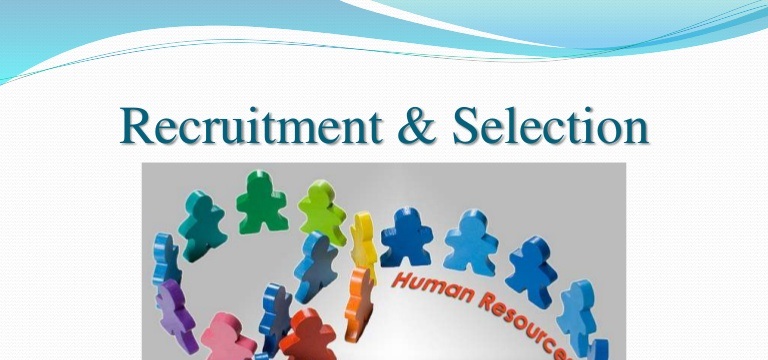Difference between recruitment and selection is only about finding candidates and encouraging them to apply while choosing the best from the list of applicants, respectively.
Both recruitment and selection are the process of manpower planning but with different spheres.
Difference between recruitment and selection can be made on a number of bases, which are, meaning, objective, process, hurdles, approach, sequence, economy and time consumption.
On the above-listed basis, the difference between recruitment and selection are as follows:
Meaning: Recruitment can be meant as an activity of developing contact between the employees and the applicants.
Whereas, selection can be meant as the process of picking numerous competent and choosing the suitable one as an employee.
Objective: The main objective of the recruitment process is to encourage a large number of candidates for the job.
Whereas, the process of selection attempts to reject the candidate who is not suitable at all.
Process: Depending on the nature of the process, recruitment can be defined as a simple process as it has to only attract the candidates.
While the selection process is quite complicated as it has to choose the most suitable candidate.
Hurdles: During the recruitment process, candidates should not cross various hurdles.
While the selection process puts before the candidate numbers of hurdles so as to appoint the most suitable one.
Approach: As the recruitment process attracts numerous candidate towards the job, hence it leaves behind the positive approach.
However, the selection process chooses the most suitable out of numerous. Thus, it can be regarded with the negative approach.
Sequence: Recruitment process proceeds the selection process while the process of selection is followed by recruitment.
Economy: The process of recruitment attracts the candidates, and they have to pay to get a job. Hence, it is an economical method.
While after selecting the candidate as an employee, the company or the respective firm have to pay to the employe. Hence, it is an expensive method.
Time Consumption: Since every candidate wants to get a proper job and the recruitment process is there to attract the candidates, and so it consumes less time.
While to reject or to choose the most suitable candidate out of numerous needs more and more time, hence, the selection process is more time-consuming process.
Thus, these are the basic points over which the recruitment and selection process is differentiated.
But to know the detailed difference between the recruitment and selection process, one must go through the details of both the manpower planning process separately.
Also Read: Best differences between RDBMS and DBMS
Difference between recruitment and selection

Recruitment
Recruitment can be defined as an overall process to identify, attract, screen, shortlist and interviewing suitable candidates for jobs within an organization.
Sometimes, candidates are recruited for unpaid roles within an organization.
Mostly to carry out the recruitment process of an organization, its managers, human resource generalists and recruitment specialists are tasked.
While in some cases, public sector employment agencies, commercial recruitment agencies and specialist search consultancies are hired to take out the process.
However, with the use of artificial intelligence, the process of recruitment gets widespread in this internet-based world.
Process of recruitment
The recruitment process is nevertheless an easy process as it is a compilation of five processes, which are, recruitment planning, strategy development, searching, screening and evaluation and control.
Recruitment planning
The process of recruitment begins with the appropriate planning.
The planning involves the vacant job position within an organisation, specifications and nature of the job, qualifications needed for the respective post and the experiences.
Recruitment committee decides the number and type of applicants be contacted and choose the only candidate who is well suitable according to terms and responsibilities.
Strategy Development
When the recruitment committee forms the comprehensive job draft, their next step is to develop the strategy that is adopted for recruiting the candidates in the organisation.
Some of the strategic considerations include make and buy employes, in which the less skilled are hired and further trained and educated.
Secondly, methods of recruitment decided by the firm like the detailed information about the candidates and selecting the best.
The next strategy is the geographical area. Through this strategy, the firm decides from which area the candidates should be hired.
The last strategy is the sources of recruitment, which should either be internal or external.
Searching
After the strategy gets prepared by the firm, the search for candidates begins.
It involves two steps with it, that is, source activation and selling.
Screening
Screening is all about shortlisting the candidates’ applications for further process.
Screening can be taken as the starting point of the selection while the integral part of the recruitment.
Evaluation and control can be considered as the very last stage in the process of recruitment in which the validity and effectiveness of the methods and process assessed are used.
Types of recruitment
The processor sources of recruitment are basically divided into two broad categories which are mentioned below:
Internal recruitment
Internal recruitment takes place within the organisation as its sources are available readily to an organisation.
The sources are primarily three, which are, transfers, promotions as well as re-employment.
Internal recruitment saves time, money, efforts, and along with this, it leads to the growth of employees’ productivity.
External recruitment
By the process of external recruitment, candidates are solicited outside the organisation.
External recruitment involves a lot of time and money however the external resources of recruitment includes employment at factory Gate, advertisements, employment exchanges, employment agencies, educational institutes, labour contractors as well as various recommendations too.
Selection
The term selection is applied to various aspects of the process, like recruitment hiring as well as acculturation. However, Starforce commonly to the selection of workers.

Selection can we define basically as the process for choosing a qualified person to perform a specific role and who adds various valuable contributions to the respective organisation.
However, the selection system must depend on job analysis as it ensures the criteria which are related to the job and adds value to the organisation.
Selection process
The process of selection varies from organisations to organisations, industries to industries, companies to companies or even among the different departments of the same organisation.
However, the process of selection varies the main steps yet remains the same.
And the selection process works with the following steps which are mentioned below:
Preliminary interview
A preliminary interview is a general and basic interview conducted by the organisation so that the candidates who are completely unfit for the work get eliminated, and the rest move to the next step.
Receiving applications
The candidates who pass the preliminary interview successfully send the application to the organisation to get proper from which includes candidates bio-data, work experience, interests and hobbies.
Screening applications
The organisation, after receiving the applications, forms a committee which screens the applications and calls the candidates for further tests and interviews.
Employment test
Before deciding a respective job for the candidate, the organisation takes the tests of the employment to check their skills and talents, which includes general aptitude, reasoning etc.
Employment interview
The last step of the process of selection is an employment interview.
It is a very critical interview as through this interview right candidate gets selected for the right job.
However, the purpose of this interview is to find out the suitability of the candidates and provide him with the idea about the work profile and the potential need.

That\’s impressive